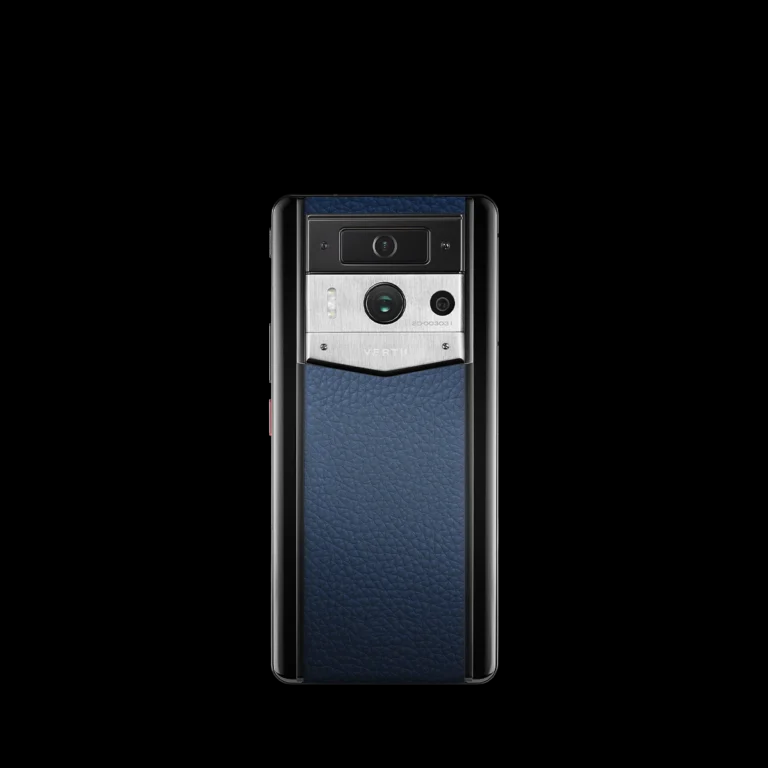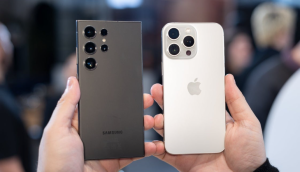In today's rapidly evolving digital landscape, identifying the luxury phone with best signal has become an indispensable topic that no professional or discerning user can afford to ignore. Whether you're a beginner seeking to understand cellular technology or an experienced practitioner demanding flawless connectivity, understanding the nuances of a luxury phone with best signal will provide you with invaluable insights and actionable strategies. This comprehensive guide will explore all aspects of securing a luxury phone with best signal, offering practical knowledge and proven approaches to achieve success in your mobile communications.
Understanding ‘Luxury Phone Best Signal' in 2025
What exactly defines a luxury phone with best signal in 2025? It refers to high-end smartphones that prioritize exceptional cellular reception and crystal-clear call clarity through advanced antenna design, sophisticated software, and robust modem integration. These devices are engineered to maintain strong connections even in challenging environments, ensuring you're always reachable and can access high-speed data. It’s about more than just raw power; it’s about uninterrupted, premium connectivity.
Defining ‘Luxury Phone Best Signal': High-End Performance
A luxury phone with best signal isn't just about a strong signal bar. It encompasses a holistic approach to connectivity, where high-end smartphones are specifically designed and optimized to excel in cellular reception and call clarity. This is achieved through a combination of innovative antenna design, superior RF (radio frequency) components, and intelligent software algorithms that work in harmony to acquire, maintain, and manage network connections more effectively than standard devices.
Key Terminology Explained: Decoding Connectivity
To truly understand a luxury phone with best signal, it's crucial to grasp key terminology. Signal Strength (dBm) measures the power of your network connection – a lower negative number (e.g., -80 dBm is better than -110 dBm) indicates a stronger signal. Carrier Aggregation combines multiple frequency bands for faster data speeds. VoLTE (Voice over LTE) delivers high-definition voice calls over the 4G LTE network. Network Latency refers to the delay in data transmission, crucial for real-time applications. Antenna Diversity uses multiple antennas to improve signal reliability.
The US Market Context: Carrier Impact on Your Signal
Even with a luxury phone with best signal, the performance is intrinsically linked to the US market context and carrier coverage. Different carriers like Verizon, AT&T, and T-Mobile have varying network infrastructures and signal strengths in different regions. A phone might perform exceptionally well on one network but less so on another if the local coverage is weak. Therefore, selecting a luxury phone with best signal also involves considering which carrier offers the strongest coverage in your most frequented locations.
The Science of Superior Signal: Antenna Design & Chipsets
Antenna Design Matters: Engineering for Reception
The foundation of a luxury phone with best signal lies in its antenna design. Manufacturers employ sophisticated techniques like dual-band antennas, optimized internal placement, and precise chipset integration to improve signal acquisition and stability. These aren't just arbitrary components; they are carefully engineered to minimize interference, maximize signal capture, and maintain a robust connection, even when environmental factors are challenging.
Chipset Power: The Brains Behind the Signal
At the heart of every luxury phone with best signal is a powerful chipset, such as the Qualcomm Snapdragon or MediaTek Dimensity series, with an integrated modem. These modems are crucial for processing cellular signals, managing handoffs between towers, and supporting advanced features like 5G and Wi-Fi 7. A superior chipset ensures not only fast data speeds but also signal stability, lower power consumption for connectivity, and reliable call performance.
Software's Role: Optimizing Your Connection
Beyond hardware, software plays a vital role in ensuring a luxury phone with best signal. Sophisticated algorithms constantly manage network connections, dynamically switching between frequency bands, reducing interference, and prioritizing call quality. This intelligent software stack works in the background to adapt to changing network conditions, ensuring your device consistently seeks out and maintains the strongest possible connection.
Top 10 Luxury Phones with the Best Signal Reception for 2025
While specific models for late 2025 are still emerging, based on current trends and manufacturer reputations for connectivity, here are likely contenders for the Top 10 Luxury Phones with the Best Signal Reception for 2025, engineered for the US market:
-
Samsung Galaxy S25 Ultra: (Anticipated) Consistently features advanced modem technology and robust antenna design, often leading in signal acquisition and stability across multiple bands.
-
Pros: Excellent carrier aggregation, reliable VoLTE, strong data speeds.
-
Cons: Large form factor can sometimes slightly impact signal in very tight grips.
-
-
Apple iPhone 16 Pro Max: (Anticipated) Known for its seamless integration of hardware and software, providing highly optimized signal performance and consistent call quality.
-
Pros: Superior call clarity, excellent antenna diversity, consistent 5G performance.
-
Cons: Less user-accessible signal diagnostics.
-
-
Google Pixel 9 Pro: (Anticipated) With Google's Tensor chip, it leverages AI and machine learning to optimize network performance, especially for call quality and voice-to-text.
-
Pros: Intelligent network management, strong VoLTE performance, reliable in mixed signal areas.
-
Cons: Modem performance historically a step behind Snapdragon in raw speed, though improving.
-
-
OnePlus 13 Pro: (Anticipated) Often praised for its excellent RF engineering, delivering strong signal acquisition and fast 5G speeds, particularly on T-Mobile.
-
Pros: Fast data speeds, quick network handoffs, robust antenna design.
-
Cons: Less prevalent on CDMA networks (Verizon legacy).
-
-
Xiaomi 15 Ultra: (Anticipated) Known for packing top-tier hardware, often including high-end modems and sophisticated antenna arrays, though US-specific band support varies.
-
Pros: Cutting-edge modem technology, strong signal in urban areas.
-
Cons: US carrier band compatibility needs verification for optimal performance.
-
-
Motorola Edge 60 Ultra: (Anticipated) Motorola has a strong history of solid RF performance and clear call quality, often due to efficient antenna placement.
-
Pros: Reliable call quality, good mid-band 5G reception.
-
Cons: Not always top-tier in raw signal strength compared to Samsung/Apple.
-
-
Sony Xperia 1 VI: (Anticipated) Sony's expertise in radio communication often translates to stable connections and good signal retention, especially in challenging environments.
-
Pros: Consistent signal stability, good for video calls due to low latency.
-
Cons: Niche market, less widespread carrier optimization.
-
-
ASUS ROG Phone 9: (Anticipated) While focused on gaming, these phones often feature advanced cooling and robust internal designs that benefit signal integrity, especially during intense usage.
-
Pros: Stable connection under load, good for streaming/gaming over cellular.
-
Cons: Design optimized for landscape gaming, potentially affecting portrait signal.
-
-
Fairphone 6: (Anticipated) While not a traditional “luxury” phone, its modular design and focus on longevity mean internal components are often well-isolated, which can incidentally benefit signal, prioritizing repairability over absolute peak performance.
-
Pros: Sustainable choice, decent signal for its class.
-
Cons: Not designed for peak RF performance like other flagships.
-
-
Custom-Modded Flagships (e.g., Caviar-enhanced): While not inherently “better signal,” these often start with a leading flagship phone, meaning their underlying RF performance is excellent. Any signal benefits come from the original device's engineering.
Leveraging VoLTE and Wi-Fi Calling for Seamless Communication
Understanding VoLTE (Voice over LTE) for Clearer Calls
VoLTE (Voice over LTE) is a critical feature for a luxury phone with best signal, enabling high-definition voice calls over the 4G LTE network rather than older 2G/3G networks. This results in significantly clearer call quality, faster call setup times, and the ability to use data simultaneously during a call. It's a hallmark of modern, reliable communication.
The Benefits of Wi-Fi Calling in Low-Signal Areas
For a truly seamless experience, especially in areas with poor cellular coverage, Wi-Fi Calling is invaluable for a luxury phone with best signal. This feature allows your phone to make and receive calls and texts over a Wi-Fi network when a cellular signal is weak or unavailable. It extends your connectivity indoors or in remote locations, ensuring you're always reachable as long as Wi-Fi is present.
Tips for Enabling and Optimizing These Features
To enable and optimize VoLTE and Wi-Fi Calling on your luxury phone with best signal, navigate to your phone's settings, typically under “Network & Internet” or “Connections.” Ensure both features are toggled on. For Wi-Fi Calling, you might need to enter an emergency address with your carrier. Keep your phone's software updated, as updates often bring improvements to network performance and stability for these features.
Testing and Maximizing Your Phone's Signal Strength
Practical Advice: How to Check Signal Strength
To evaluate your luxury phone with best signal, you can check its actual signal strength (dBm). On Android, go to Settings > About Phone > SIM status or Network. On iPhone, dial 3001#12345# and press call to enter Field Test Mode (values under “Serving Cell Info” or “Rsrp” are relevant). A reading between -80 dBm and -90 dBm is good, while -110 dBm or worse indicates a very weak signal.
Maximizing Signal: Practical Strategies
Maximizing the signal on your luxury phone with best signal involves several practical steps. Avoid blocking cases made of metal, which can interfere with antenna performance. Be aware of dead zones in buildings or basements. Strategic phone positioning, like moving closer to a window, can significantly improve reception. Even holding your phone in a specific way can impact signal strength, so experiment with different grips.
Network Latency Explained: Why Low Latency Matters
Network latency is the delay before a transfer of data begins following an instruction. For a luxury phone with best signal, low latency is critical for real-time communication. High latency can cause delays in voice calls, stuttering in video conferences, and lag in online gaming. Devices with superior modems and optimized software work to minimize latency, ensuring a smooth and responsive experience across all applications.
Independent Reviews and US Market Trends
Importance of Unbiased Reviews
When selecting a luxury phone with best signal, the importance of unbiased reviews from reputable tech publications is paramount. Look for reviews that specifically test network performance, including dBm readings, call quality tests, and data speed comparisons across major US carriers (Verizon, AT&T, T-Mobile). These independent assessments provide real-world insights beyond marketing claims.
US Market Trends: Demand for Seamless Connectivity
Current US market trends reveal a growing demand for seamless and reliable connectivity in luxury devices. As more aspects of life move online, from remote work to streaming entertainment and smart home integration, consumers expect their luxury phone with best signal to deliver consistent, high-speed access wherever they go. This pushes manufacturers to continually innovate in antenna and modem technology.
Future Outlook: Advancements in 5G and Beyond
إن future outlook for a luxury phone with best signal is incredibly promising, with ongoing advancements in 5G and beyond. Technologies like mmWave 5G (for super-fast, short-range connections) and 5G standalone networks will further enhance speed, capacity, and crucially, reduce latency. Future devices will integrate even more sophisticated antenna arrays and AI-driven network optimization for truly unprecedented signal reliability.









